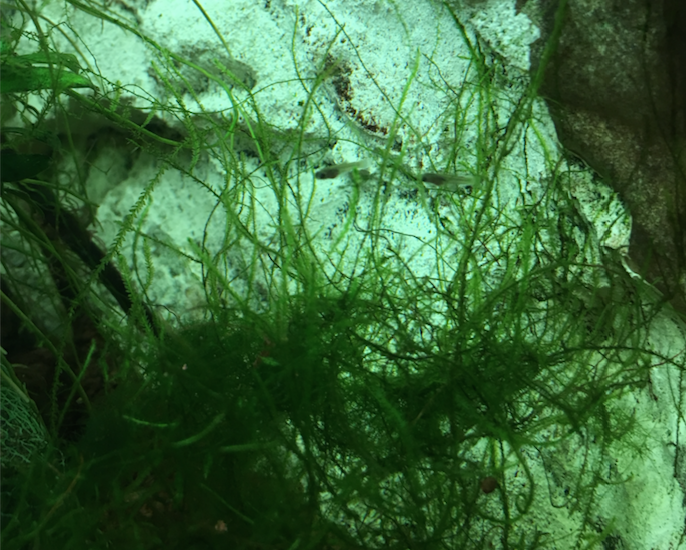Carbon in the Planted Aquarium: Gas Vs. Liquid
Carbon makes up about 40% of plants. It is an essential nutrient to the plant’s growth. For aquarists running a planted tank, supplementing carbon is one way of accelerating the growth of your plants. With the growing number of aquarium hobbyists, it is easier to find products that add carbon to your aquarium.
Do You Need to Supplement Carbon?
The availability of carbon products doesn’t mean that every planted tank needs carbon supplements. It’s imperative to assess your tank and decide whether you actually need additional carbon or not.
Some of the factors that can point you in the right direction include the amount of lighting you have in your set up, the type of plants you wish to grow, or you have in the tank, whether you’re prepared to deal with the additional maintenance that comes with fast growth and your budget.
Additional carbon is vital for aquarium setups with high light levels. Intense light speeds up the growth of the plants. Without carbon to provide the plants with the nutrients they need to cater to their rapid growth, algae takes over the tank.
A tank with lighting that is above 0.5 watts per liter or 2watts per gallon is considered high lighting and could do with some carbon supplements.
If you’re running nano aquariums that are 40 liters or 10 gallons or less, and the lighting setup is roughly one watt per liter, that’s an intense lighting set up as well.
Sometimes, the need for high lighting is driven by the type of plants you have in your aquarium. Plants like the carpeting species dominate the bottom of the tank. They need intense light that can penetrate the water columns and sustain the growth of the bottom-sitting plants.
The combination of high lighting and carbon injection enhances plant growth, which requires more maintenance in terms of pruning and regular water changes.
For aquariums with low lighting, carbon supplementing is not necessary. Most setups with low lighting have enough carbon in the water and substrate to sustain the growth of the plants.
However, you can add a little carbon to improve plant health and prevent algae issues in the tank.
Types of Additional Carbon
Carbon in its gaseous form comes from carbon dioxide (CO2). There are three main methods of adding carbon dioxide to your aquarium;
- Yeast-based
- Pressurized systems
- Aerosol
Other than the gaseous forms of carbon, there’s also liquid carbon which comes in the form of liquid carbon fertilizers. It’s an easy to use the product, and most of them have the same use and dosing instructions.
Yeast-Based Systems
Yeast-based systems are the most basic way of adding carbon to your tank. It’s suitable for beginners and works best in small to mid-sized aquariums.
The system comes with minimal equipment and uses basic chemistry. Yeast combined with sugar and water produces CO2. The kit comes with sachets and a screw-top canister. You make the mixture inside the canister and let it ferment, which produces the CO2 that is added to the aquarium using a ladder diffuser.
To get the most out of a yeast-based system, the set up needs to be in a warm room. At first, the system produces no bubbles. The bubbles increase as the fermenting process increases then stops once the process is complete.
Advantages of yeast-based CO2
- Yeast based CO2 is affordable to set up and run
- It is simple to use
- It’s challenging to overdose because the CO2 production stops once the fermentation process is completed
Disadvantages of yeast-based CO2
- You can’t control the amount of CO2 released into the water
- The CO2 levels produced are inconsistent
- It’s not suitable for large aquariums
- It needs regular mixture changes to keep the system running.
Pressurized systems
This is a more sophisticated but more reliable and controllable system. It costs more but presents you with the ability to release just the right amount of CO2 into the tank without poisoning your fish.
For the best performance, invest in the best pressurized system you can afford. Emphasize on getting a high-quality regulator that will last a lifetime.
If you’re starting, an off-the-shelf system will work but these are more expensive in the long run. It’s better to use a customized system that is cheaper to run even though more expensive to buy.
Even with the regulator, you need to use a CO2 drop checker to ensure you get the right amount of CO2 into the water. For safety and savings, shut off the CO2 supply at night using a solenoid.
Inline or glass diffusers are the most common because they have better aesthetics, and they are not ugly or bulky. But, you need to clean them regularly by dipping them in bleach to keep them running efficiently.
Advantages of pressurized CO2
- Pressurized CO2 is effective in speeding up plant growth
- The system can be fully automated for the best results
- It is critical in growing some types of plants
- The pressurized system provides a steady amount of CO2
- It is easy to control
- You can customize it depending on the size of your aquarium
- It is suitable for high energy setups
Disadvantages of pressurized CO2
- High amounts of CO2 can be toxic to the fish
- The initial cost of setting up is high
- It can be intimidating to use for beginners
- The system runs under hazardous high pressure
- If not calibrated correctly, the fluctuating levels can lead to algae growth
- Refilling the system is expensive
Aerosols
Aerosols are the cheapest and fastest way to add CO2 to an aquarium. The set up comprises a pressurized can containing CO2, a diffuser, and a hose.
To release the gas, you press the button on the can and the diffuser fills up with CO2. When in contact with the water, the CO2 is soaked up from the diffuser chamber. The process is repeated until all the gas is gone, and the diffuser is filled up with water.
Aerosols only work to increase CO2 significantly in small to medium-sized aquariums with little control over diffusion.
Advantages of aerosols
- Perfect for small tanks and beginners
- Aerosols are easy to use
- The setup is inexpensive and affordable to run
- It’s difficult to overdose CO2
Disadvantages of aerosols
- It’s not effective for large aquariums
- You need to refill the can regularly
- You have no control over the amount of CO2 released into the tank
Liquid Carbon Fertilizers
Liquid carbon fertilizers have been around for several years. There are new brands being released, and others still in the pipework. Despite the different names and brands, they all have the same active ingredient, and the dosing instructions are similar.
However, some liquid carbon fertilizer brands are more concentrated than others. It’s essential to go through the instructions, especially the dosing before you start using the product.
Advantages of liquid carbon
- Because of its state, liquid carbon makes dosing simple
- It prevents and treats algae problems in the aquarium
- It’s a valuable product to have when running small tanks
- You don’t need to have any additional equipment in the tank to add the CO2
Disadvantages of liquid carbon
- It can be toxic if you add too much
- If you’re running a large aquarium, the cost of using liquid carbon can be high
- It’s harmful to some plants
Gas Vs. Liquid Carbon
The bottom line for both gas and liquid carbon varieties is to add carbon into the water by adding carbon dioxide.
However, comparing which of the two offers better results is complicated because many factors would have to be considered among them;
- The size of the CO2 system and the specs
- The size of the liquid bottles
- The amount of CO 2 required
- The size of the aquarium
- The type of plants and their demand for CO2
If all the factors are constant, liquid carbon is more viable because it is easier and cheaper to set up, especially if you’re going for a pressurized CO2 system.
Gas injection, however, has more benefits than liquid carbon. These benefits include full automation of the system using a solenoid that can save you money and regulate carbon production and delivery.
Furthermore, liquid carbon is not suitable for all plants. Varieties like Vallisneria don’t respond well to liquid carbon. It’s also worth noting that liquid carbon would not provide enough carbon in a high lighting set up.
In many ways, a pressurized CO2 system though expensive, is one of the best ways of adding CO2 into the tank.
Liquid carbon is ideal in a small sample of aquariums that meet its criteria. It’s affordable and perfect for small aquariums and beginner aquarists. But, if you’re looking to go big and have a tank with crystal clear water packed with oxygen bubbles, a gas set up (particularly a pressurized system) is the way to go.
Conclusion
Deciding which of the two carbon products to use boils down to four things; your experience, the size of your tank, the type of plants you have and your budget.

